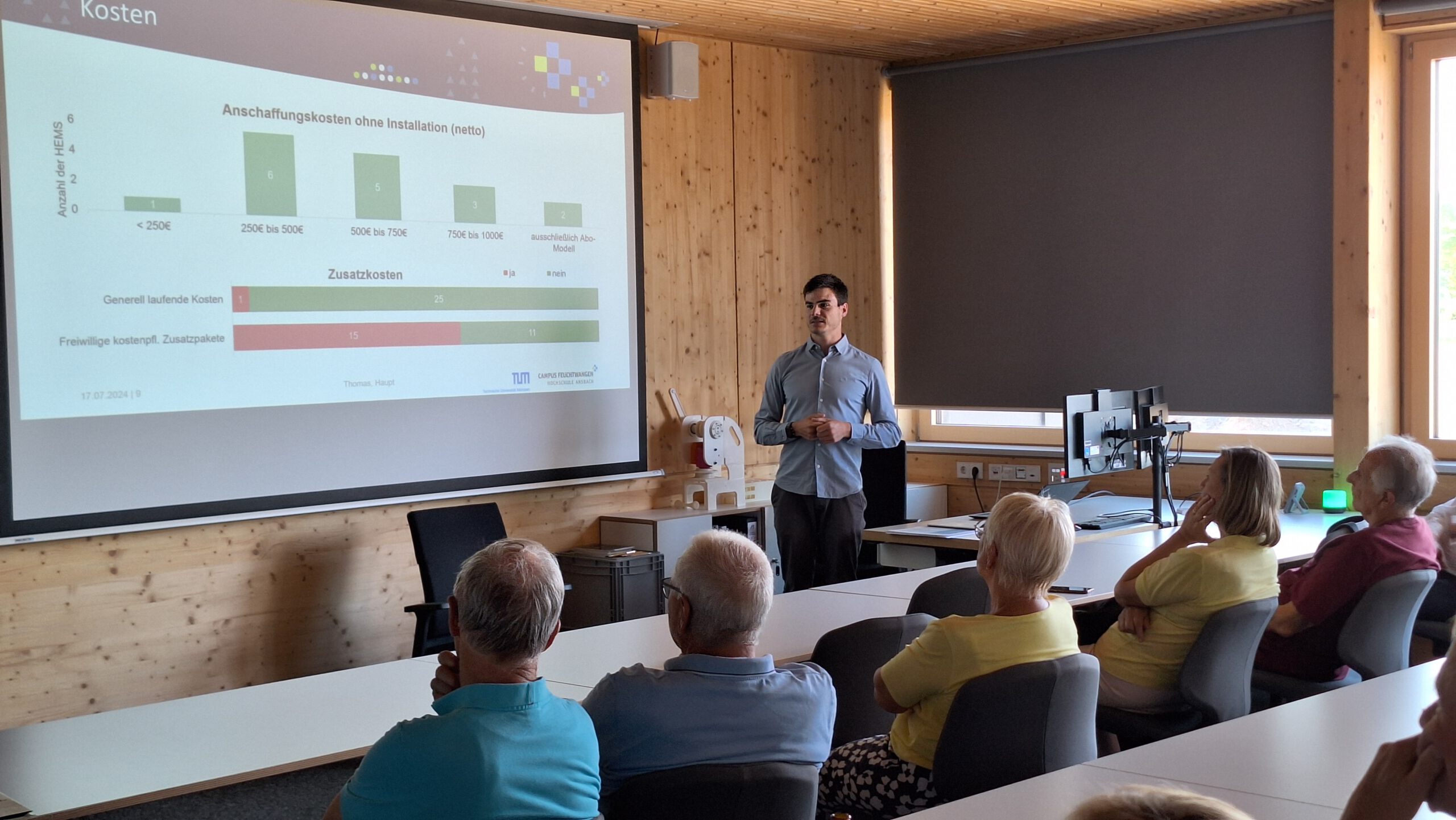A look inside the black box – Thomas Haupt explains current home energy management systems
HEMS market overview for pv magazine presented in Energy Talk
Back in February, Thomas Haupt, M.Sc. presented his market overview of home energy management systems (HEMS), which he compiled as part of his doctorate at the Feuchtwangen campus of Ansbach University of Applied Sciences, to a broad specialist audience at the 39th PV Symposium at Kloster Banz in Bad Staffelstein. He has now published an entire article on HEMS in the June issue of pv magazine, a trade journal for the solar industry. At the last Energy Talk on 17 July, Thomas Haupt therefore once again presented his HEMS overview to a good 20 interested people at the Feuchtwangen campus:
“A large market for home energy management systems has emerged within just a few years. The industry sees great potential and with dynamic electricity tariffs and sector coupling, which means that heat pumps and wallboxes, among other things, have to be integrated, the systems are becoming increasingly relevant. However, the wide range of products and the lack of market transparency pose a challenge for installers and consumers,” says Haupt, explaining the motivation behind his work.
“We conducted a survey of providers at Ansbach University of Applied Sciences in the fourth quarter of 2023 and then analysed the similarities and differences between the systems. In the overview table, we have included some updates from April 2024 for publication in pv magazine in order to provide as good an overview of the market as possible.”
In the subsequent discussion, he outlined the added value of home energy management systems: “A key driver for consumers when purchasing a home energy management system is the reduction in energy costs. On the one hand, home energy management systems can optimise the building’s own photovoltaic consumption. On the other hand, they can control the flexible consumption devices in such a way that variable electricity tariffs are utilised effectively. A combination of both options is also possible, but requires a more complex optimisation algorithm.”
The topic of dynamic electricity tariffs was also discussed in the evening: “There are still only a few providers for variable tariffs. However, this market has grown rapidly in recent months,” says Thomas Haupt. “From 1 January 2025, suppliers will have to offer a dynamic electricity tariff. One relevant aspect is the practical implementation of these tariffs. Billing requires both the recording of electricity consumption in hourly resolution and the corresponding hourly electricity prices. The transmission of hourly electricity consumption from the consumer to the energy supplier requires a smart meter (with gateway) installed at the consumer’s premises. As only a few smart meters have been installed in Germany to date, Tibber, for example, offers an optical reading head for existing meters as an interim solution. However, this does not allow energy balancing.”
“In order to optimise well, the systems need forecasts for generation and consumption. Generation forecasting is already common practice on a large scale. Load forecasts are much more complex due to their individuality and the human factor. They are also closely interlinked with the consumption of the heat pump. The costs also vary with the different functional scope of the systems. The cheapest system costs less than 250 euros, the most expensive up to 1,000 euros. There are also subscription models,” he adds.
“To simplify the practical implementation of home energy management systems, we are building up a public database for home energy management systems at Ansbach University of Applied Sciences using the results of this survey, among other things. The survey takes place in an annual cycle and is published every February/March,” he concludes.

